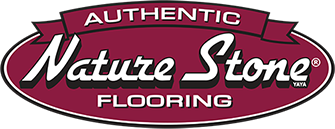Why Traditional Flooring Options are for Bad for Your Garage
Many homeowners don’t think much about the type of flooring they should have in their garage, instead opting for whatever first grabs their attention. However, it’s important to understand that not all options are suitable for the high-stress environment presented by a garage, even one that doesn’t see heavy use.
In particular, traditional options such as concrete, tile, vinyl, and laminate can be easily damaged by moisture or chemicals and will require expensive repairs or replacements over time. These materials just aren’t suited for the dampness, temperature swings, and others stresses of such an environment.
Polyaspartic epoxy flooring has been on the rise as an alternative to these traditional types of flooring, but unfortunately for homeowners taken in by misleading sales pitches, polyaspartic epoxy flooring can be just as bad for your garage as concrete or tile. In an effort to help you avoid problems, here’s what you need to know before you shell out money on an installation.
- Polyaspartic epoxy flooring has a glossy finish that can be slippery when wet, which could lead to falls and injuries. This is a concern in a garage, which may often have spills, tracked-in rain and snow, and similar conditions.
- It also requires regular maintenance and cleaning, or else it will start to lose its shine and color over time. In just a few years, you may even need a replacement!
- Polyaspartic epoxy coatings, while offering a glossy finish, are not as durable as other epoxy-based options because they’re meant to be all-purpose solutions. Put simply, they’re not formulated to be able to stand up to garage conditions.
When it comes time to select the right type of flooring for your garage, think carefully about your needs and whether you want an easy-to-clean surface or one that will stand up to heavy traffic and wear – though as we’ll discuss below, it’s possible to have BOTH.
Most importantly, there are some key factors to take into consideration when it comes to having flooring installed in your garage. They include:
- The type of environment: Is it a wet, dry, or a dusty space? Do you do work in there, such as car repairs or other workshop work? Do you track in rain and snow? All these elements need to be taken into account, both for ease of maintenance and for safety reasons.
- The purpose of the garage: Do you plan on using it for storage or light recreational activities, like working out or playing darts, or do you plan on using it for heavy-duty activities, such as car repairs or woodworking?
- Your budget: While there are many types of flooring available, it’s important to consider how long the flooring will last and how much maintenance and cleaning it will require. Polyaspartic epoxy flooring, for example, can appear to have a good price at installation, but its short lifespan means it may need to be replaced sooner rather than later.
With a wide range of options available, you can find a flooring type that fits your needs and budget.
Thankfully, there are alternatives to the bad options discussed above. For example, Nature Stone® was designed from the ground up for use in garages, basements, and outdoor areas. This material allows spills and dampness to naturally drain away, making it highly slip-resistant. This is ideal for a garage.
The manufacturers are so confident that Nature Stone® will outperform traditional epoxy paint flooring that they offer an unrivaled unconditional warranty. No strings. No hidden costs. Just pure protection for you and your investment. This warranty is fully transferrable and is good for 10 years.
You won’t find any other flooring manufacturer or installer who stands behind their product to that extent! So when it comes time to re-do the floors in your garage this spring, skip the epoxy paint and polyaspartic epoxy gimmicks and stick with Nature Stone®.


